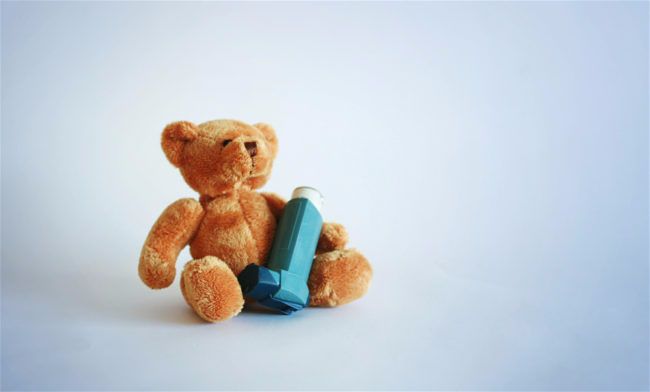Does your child have asthma? If so, he or she isn’t alone — more than 6.3 million children in the United States have been diagnosed with the condition. How much do you know about this common chronic condition?
If your child has been diagnosed with asthma, you’re probably at least somewhat familiar with the condition. But let’s take a deeper dive into asthma and what it entails.
“Asthma is a chronic disease of airway inflammation that’s usually caused by identifiable underlying triggers,” says Matthew Kreth, M.D., F.A.A.P., Erlanger pediatric pulmonologist and assistant professor of Pediatrics in the Pediatric Pulmonology Department at UT College of Medicine, Chattanooga. “It’s one of the most common chronic diseases worldwide.”
Understanding the symptoms
Because asthma causes the airways to tighten up and inflame, the condition can lead to several symptoms, including:
- Chest tightness or discomfort
- Coughing
- Shortness of breath
- Wheezing
Of those symptoms, coughing is the most common — and the type of cough can generally help a doctor determine whether the coughing is associated with asthma.
“Chronic cough is the most common symptom in young kids,” Dr. Kreth says. “If it’s a wet, daytime cough, it’s probably not asthma. On the other hand, if it’s a chronic, dry cough that occurs mostly at night, it’s likely caused by asthma.”
The causes of asthma
Asthma can be triggered by a variety of things, many of which can largely be avoided.
“In kids, asthma is most often triggered by an upper respiratory tract infection,” Dr. Kreth says. “But exercise, dust mites, pollen, weather changes and tobacco exposure are also common triggers for childhood asthma.
“Tobacco exposure is a big deal. One of the biggest things parents can do to prevent asthma flare-ups in their children is to quit smoking.”
If dust mites trigger a child’s asthma, parents can help avoid exposure by using plastic bed sheets and pillow cases, since dust mites tend to live and thrive in bedding.
Exercise-induced asthma is treated differently than asthma with other triggers — for good reason.
“With almost all triggers, we say you want to avoid the trigger,” Dr. Kreth says. “But not with exercise. In that case, we want to treat the asthma so that kids aren’t held back from activity.”
How asthma is managed
Treatment for asthma is largely dependent on the severity of the condition. For those who only experience asthma symptoms intermittently, an inhaler can be used as needed.
If the condition is more persistent, asthma is treated using a combination of preventive medications and so-called “rescue” medications, meaning an inhaler.
“Persistent asthma is treated using an inhaled steroid that’s taken twice a day every day,” Dr. Kreth says. “These are considered ‘control’ medications, in that they help prevent asthma symptoms. Occasionally kids will also use an oral medication that treats both allergies and asthma, in addition to the inhaled steroid.”
It’s important that a spacer, a device that helps make sure the medicine is inhaled properly and reaches the lungs rather than the mouth or stomach, always be used with an inhaler.
Have a child with asthma but aren’t sure how well it’s being managed? Take this quick test — for children ages 4 to 11 or for children age 12 and older — to see whether you should see a doctor about better controlling your child’s asthma symptoms. Find a doctor here.







